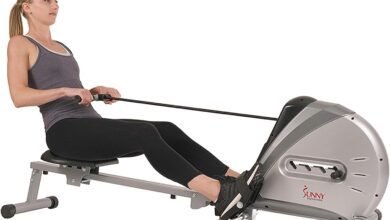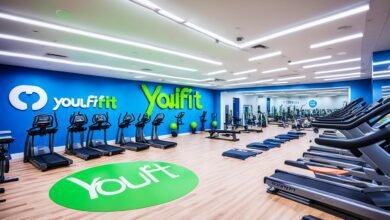The Battle of the Burn What Exercise Burns the Most Calories?

The number of calories burnt during exercise is a key factor in losing those excess pounds or keeping a healthy weight. Still, not all workout is made equal when it comes to burning calories. Let’s explore some of the most effective workouts that torch calories like wildfire.
Interval Training at High Intensity (HIIT)
In HIIT exercises there are quick bursts of intensive activity interspersed with rest intervals. This form of exercise keeps your heart rate elevated maximizing calorie burn even after you’ve finished working out. A 30-minute HIIT session can torch an impressive amount of calories due to its intense nature.
- Running and Sprinting
Pounding the pavement or sprinting on a track can significantly burn calories. Running engages multiple muscle groups which ramps up your calorie expenditure. Sprinting in particular pushes your body to its limits resulting in a high-calorie burn in a short period.
- Cycling Indoor or Outdoor
Whether it’s cycling outdoors or hopping on a stationary bike, cycling is a fantastic calorie-burning exercise. The constant pedaling engages large muscle groups in the legs, leading to substantial calorie expenditure. Cycling at a high intensity or incorporating uphill climbs can further boost the burn.
- Jump Rope
A simple yet effective exercise, jumping rope can burn an impressive amount of calories in a short time. It engages various muscle groups while also improving coordination and cardiovascular health.
- Swimming
A full-body exercise that may burn a lot of calories is swimming. The resistance of the water adds intensity making it an excellent choice for those looking to burn calories without putting excessive stress on their joints.
- Boxing
Boxing workouts involve a mix of cardio and strength training resulting in a high-calorie burn. The combination of punches footwork and body movements engages various muscle groups elevating the overall calorie expenditure.
- Rowing
Rowing is a low-impact high-calorie-burning exercise that engages multiple muscle groups simultaneously. Whether using a rowing machine or rowing on water it offers an effective way to burn calories while improving cardiovascular fitness.
Maximize calorie burn during workouts
Interval training involves alternating between high-intensity bursts of activity and periods of lower-intensity exercise or rest. It’s an effective method of increasing fitness and calorie burn. Popular interval training methods that test the body in various ways include circuit training and high-intensity interval training (HIIT).
High-intense interval training or HIIT alternates short bursts of vigorous exercise with rest intervals or low-intensity activities. For example, you may sprint for thirty seconds, and then take a sixty-second break to walk or jog before repeating the sprint.
HIIT workouts can vary in duration and exercises but typically aim to push your heart rate near its maximum capacity during intense intervals.
Circuit training: This is executing a set of exercises one after the other with little to no break in between. Each exercise targets different muscle groups. For example, you might do a set of push-ups followed by squats, lunges, and so on completing a circuit before taking a brief rest and repeating the circuit several times.
Both HIIT and circuit training have several benefits:
- Efficiency: They often take less time than traditional workouts but offer comparable or even greater benefits in terms of calorie burn and cardiovascular improvement.
- Calorie Burn: By engaging in high-intensity intervals you can continue burning calories even after the workout as your body works to recover.
- Cardiovascular Health: These workouts challenge your heart and lungs improving cardiovascular endurance over time.
- Variety: You can customize HIIT or circuit workouts by using different exercises making them suitable for various fitness levels and preferences.
- Muscle Building and Fat Loss: HIIT and circuit training can help maintain muscle mass while burning fat due to their combination of strength and cardio elements.
When incorporating interval training into your routine it’s essential to warm up adequately to prepare your body for the intense activity. Start slowly gradually increasing the intensity and listen to your body’s signals. To avoid injuries make sure you use the right form and technique.
Weight training burns fewer calories than cardio
Cardio exercises such as running cycling or swimming are known for burning a significant number of calories during the activity itself. But in terms of metabolism and calorie burn weight training has special advantages. Exercises including weights or resistance bands not only help to develop and repair muscular tissue in the body but also strengthen muscles. Your body uses energy for this process so even after the activity is complete it keeps burning calories. Muscle tissue is essentially more metabolically active than fat tissue requiring more energy to sustain.
“Afterburn” or excess post-exercise oxygen consumption (EPOC) are other terms used to describe this syndrome. It’s important to note that while cardio exercises predominantly burn calories during the workout weight training contributes to a higher metabolism over time leading to more consistent calorie burning even at rest. Moreover, a higher muscle mass can help with long-term weight management as it allows for a more efficient calorie burn.

Target belly fat or specific areas for fat loss
Spot reduction the idea that you can target fat loss in specific areas of the body through exercise is indeed a myth. When you exercise a particular muscle group it strengthens and tones that area but doesn’t necessarily burn fat exclusively from that spot. Body fat is lost systematically from the entire body as a result of a calorie deficit wherein you burn more calories than you consume. This deficit prompts the body to utilize stored fat for energy leading to overall fat loss.
To reduce fat in specific areas such as the belly, thighs, or arms it’s crucial to focus on a holistic approach:
Balanced Exercise Routine: Engage in a mix of cardiovascular exercises (like running, cycling, or dancing) and strength training. Cardio helps burn calories while strength training builds muscle which can increase overall metabolism and aid in fat loss.
Healthy Diet: Combine exercise with a nutritious balanced diet. Prioritize entire meals, fruits, vegetables, lean proteins, healthy fats, and whole grains. Steer clear of processed meals, sweets, and harmful fats in excess.
Consistency: Exercise and a good diet must be done consistently. It takes time for the body to shed fat and maintaining a routine over the long term is crucial for seeing results.
Working out when hungry increases calorie burn
Exercising on an empty stomach also known as fasted exercise might lead the body to rely more on stored fat for fuel compared to exercising after a meal. When you haven’t eaten recently insulin levels are lower allowing the body to use fat stores as a primary energy source.
However, while fasted exercise may enhance fat burning during the workout it’s crucial to consider individual preferences and energy needs for optimal performance:
Benefits of Fasted Exercise:
- Increased Fat Utilization: With lower glycogen levels the body’s stored form of carbohydrates the body might turn to fat stores for energy more readily during fasted exercise.
- Insulin Sensitivity: Some research suggests that fasted workouts can improve insulin sensitivity potentially aiding in weight management and metabolic health over time.
Considerations for Fasted Exercise:
- Energy Levels: Some people may feel fatigued or unable to perform at their best without consuming food before exercising. Energy levels can vary based on individual metabolism and overall health.
- Intensity and Endurance: High-intensity or longer-duration workouts may be challenging without sufficient fuel. In such cases, a light meal or snack beforehand can provide the necessary energy.
Rely solely on exercise to lose weight
Exercise plays a pivotal role in maintaining good health and managing weight. However, achieving sustainable weight loss requires more than just exercise it demands a harmonious blend of physical activity and a nutritious diet.
Role of Exercise:
- Calorie Expenditure: Exercise helps burn calories aiding in weight management by creating a calorie deficit when combined with a balanced diet.
- Metabolic Health: Regular exercise enhances metabolism making it more efficient in burning calories even at rest. This assists in long-term weight maintenance.
- Muscle Maintenance: Physical activity especially resistance training preserves and builds muscle mass which is crucial for a healthy metabolism and overall body composition.
Importance of a Healthy Diet:
1. Calorie Control: To generate an overall deficit for weight reduction a balanced diet and activity that burns calories complement each other.
2. Nutrient Density: Foods high in nutrients include vital vitamins, minerals, and antioxidants that promote general health and help reduce weight by encouraging fullness and healthy body processes.
3. Energy Balance: Combining physical activity with a nutritious diet will guarantee that you have adequate energy for exercise and that you are getting the nutrients you need for muscle growth and repair.
The Synergy of Exercise and Diet:
- Sustainable Weight Loss: While exercise burns calories weight loss is most effective when combined with a healthy diet. This combination helps create a sustainable long-term approach to managing weight.
- Change in Lifestyle: Maintaining weight reduction and general well-being is made simpler by fostering healthy lifestyle habits via the adoption of a balanced approach to exercise and eating.
- Wide-ranging Health Benefits: Exercise and a healthy diet not only help control weight but also lower the chance of developing chronic illnesses improve mood improve the quality of sleep and enhance general quality of life.
At The End
While these exercises stand out for their calorie-burning potential the best workout for you depends on various factors like your fitness level, preferences, and any existing health conditions. To maximize calorie burn and overall health benefits it’s essential to combine these exercises with a balanced diet and consistent physical activity. Remember the key to successful weight management isn’t just about burning calories during exercise it’s about adopting a sustainable lifestyle that includes regular physical activity and healthy eating habits.




